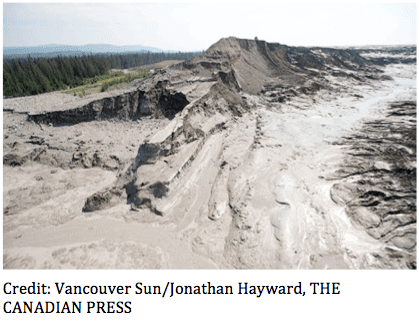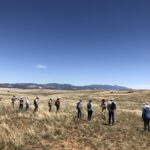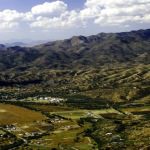
Save the Scenic Santa Ritas Media Release
August 8, 2014
Environmental Catastrophe in Canada Underscores Rosemont Threats
(TUCSON, Ariz.) The international engineering firm that designed a Canadian mine tailings dam that collapsed earlier this week is also playing a key role in the development of the proposed Rosemont Copper Mine’s tailings dump.
Monday’s catastrophic failure of Imperial Metal’s Mount Polley tailings dam sent millions of gallons of toxic slurry laden with heavy metals and other pollutants gushing into waterways approximately 370 miles northeast of Vancouver, BC. 
The Mount Polley environmental catastrophe has resulted in an emergency ban on drinking water, devastation of important salmon habitat and damage to the region’s tourism and outdoor economy. The costs of cleaning up the environmental damage are unknown, but the stock market apparently believes it will be significant, as Imperial Metals share price has dropped by over 40% since the incident occurred on Monday.
Knight Piésold Ltd. had provided Imperial Metals with design, construction supervision, quality control, and annual inspections of the failed Mount Polley tailings facility, according to Canadian regulatory filings.
In Arizona, Knight Piésold conducted laboratory testing on materials that would be used in Rosemont’s proposed tailings facility as a subcontractor for AMEC Earth & Environmental, Inc., which prepared the final design report for Rosemont’s dry stack tailings storage facility in April 2009.
AMEC also relied on Knight Piésold in 2010 to conduct analysis of soil materials in response to questions from the Arizona Department of Environmental Quality after it determined that the previous “assessment of physical and engineering properties of the dry stack tailings…is inadequate.”
“What happened in Canada this week is a reminder that, notwithstanding the PR spin from mining companies, the worst case scenario can and does happen,” said Gayle Hartmann, President of the Save the Scenic Santa Ritas. “While there may be some differences in the design, if even a fraction of the devastation that occurred in Canada were to take place at the proposed Rosemont mine, the drinking water supplies of a metropolitan area of 1 million people would be impacted not to mention the destruction of important desert riparian habitat.”
Potential incidents such as what occurred at the Mount Polley mine are the basis for SSSR’s repeated calls for the relevant regulatory agencies to do their job and reject the proposed Rosemont Mine because the risks to southern Arizona’s water supplies and economy are just too great. Earlier this year, a diverse group of organizations and individuals, including Save the Scenic Santa Ritas, Pima County, the Tohono O’odham Nation and Pascua Yaqui Tribe, and the Arizona Game and Fish Department, filed comprehensive written objections with the Forest Service on its final environmental analysis for the proposed mine.
Their objections raised a number of critical issues that, in light of the disaster in Canada, are even more relevant and significant today. These objections respond to the failure of the Forest Service to address the unmitigated toxic pit lake that will be created, accepting Rosemont’s and its engineers unproven assurances about the technical feasibility of its dry stack tailings which have never been used on a mine the size of Rosemont, allowing potential violations of the Clean Water and Clean Air acts and failing to set a specific amount for a reclamation bond that would clean up environmental disasters such as what occurred at Mount Polley.
“Given the revelation that the engineering firm that was involved in designing the failed tailings facility in Canada was also involved in the design of the Rosemont facility, the Forest Service must reverse its rubber stamp approval of the mine and along with the other regulatory agencies, reject the Rosemont mine to ensure that what happened in Canada will not happen here,” Hartmann said. “There are some places that should not be mined and the Santa Rita Mountains are just such a place. ”
Save the Scenic Santa Ritas is a non-profit, community organization working to protect the Santa Rita and Patagonia Mountains from environmental degradation caused by mining and mineral exploration activities. For more information, go
to ScenicSantaRitas.org or RosemontMineTruth.com.
For media coverage of the Mount Polley Mine:











